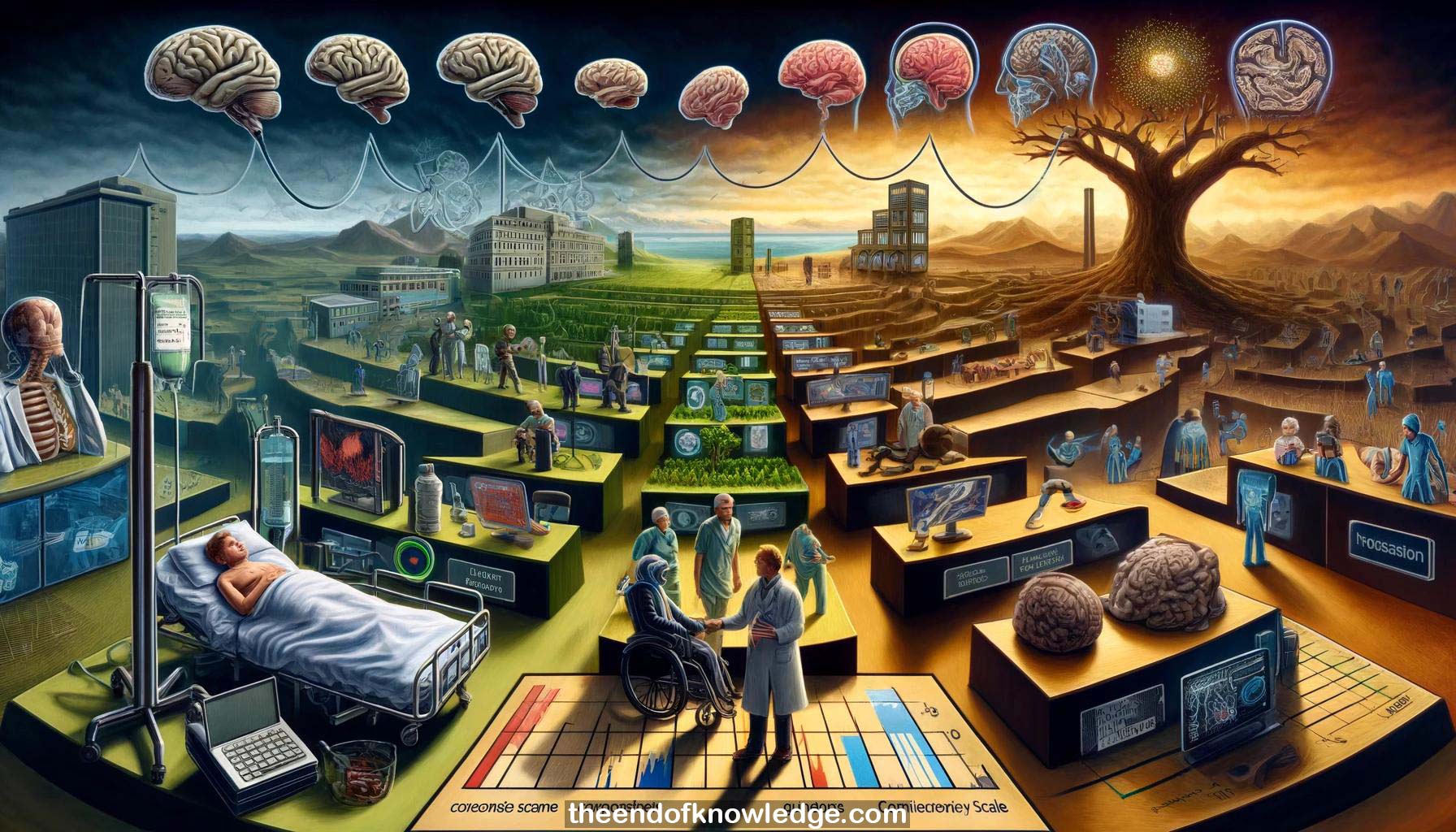 >
>
Concept Graph & Resume using Claude 3 Opus | Chat GPT4 | Llama 3:
Resume:
1.- Caroline Schnakers is a leading researcher in the field of disorders of consciousness, building on the work of Steven Laureys.
2.- Patients with severe brain injury progress from coma to vegetative state, minimally conscious state, and emergence from disorder of consciousness.
3.- Misdiagnosis rates for disorders of consciousness remain around 40%, despite increased awareness of the need for sensitive assessment tools.
4.- The Coma Recovery Scale-Revised is a sensitive tool for detecting signs of consciousness, superior to the commonly used Glasgow Coma Scale.
5.- Guidelines from the American Academy of Neurology and European Academy of Neurology provide recommendations for clinical management of disorders of consciousness.
6.- Spasticity and pain are major confounders that can prevent detection of signs of consciousness in brain-injured patients.
7.- The Nociception Coma Scale-Revised helps assess pain in patients with disorders of consciousness and monitor treatment effectiveness.
8.- Spasticity progresses differently over time depending on injury etiology - more rapid contractures in hypoxic-ischemic versus traumatic brain injury.
9.- Functional neuroimaging shows some seemingly unresponsive patients can follow commands through mental imagery, indicating "cognitive-motor dissociation".
10.- Patients demonstrating "cognitive-motor dissociation" appear able to perform complex cognitive tasks like language comprehension, working memory, executive functions.
11.- The clinical entity of "cognitive-motor dissociation" is distinct from locked-in syndrome, which has more circumscribed brainstem lesions and eye movement.
12.- Limited studies suggest thalamocortical and mesocircuit disruptions may underlie the dissociation between cognitive capacity and motor output.
13.- Lack of expert consensus on terminology for this "cognitive-motor dissociation" phenomenon leads to confusion for families and researchers.
14.- Surveys show most clinicians now use EEG rather than fMRI to detect covert consciousness, but implementation barriers remain.
15.- Mental imagery EEG paradigms are validated for detecting command-following and higher cognition in patients who are unresponsive at the bedside.
16.- Standardized EEG testing early after brain injury can identify patients with preserved cognition and better prognosis despite unresponsive exam.
17.- Development of EEG markers of specific cognitive functions like language, attention, working memory in this population remains an unmet need.
18.- The "own name" EEG paradigm reveals basic attention and prognostic value based on brain response to one's name versus unfamiliar names.
19.- A novel EEG attention paradigm involving tone counting over repeated blocks captures variability in patients' vigilance over short timescales.
20.- Non-invasive ultrasonic thalamic stimulation shows promise for promoting recovery in chronic disorders of consciousness, but replication is needed.
21.- Case studies suggest ultrasound may lead to meaningful recovery in some patients, but distinguishing treatment effects from spontaneous recovery is difficult.
22.- Controlled trials of ultrasonic stimulation (versus sham) are underway to better establish efficacy, optimal dosing, and neurophysiological mechanisms.
23.- Behavioral assessments suggest ultrasound may enhance patients' arousal and visual attention; EEG correlates of cognitive effects should be examined.
24.- Home-based EEG systems are being explored to expand access to brain-computer interface technology for severely disabled patients.
25.- Accessible, user-friendly, cost-effective home EEG may enable remote cognitive rehabilitation, but barriers like visual impairment must be considered.
26.- Future brain stimulation targets beyond the thalamus, like the basal ganglia, may address specific motor or cognitive deficits at different recovery stages.
27.- The field is at an exciting point with many researchers making strides in diagnosis, prognosis, and novel therapies for these challenging conditions.
28.- Increased awareness, validated assessment tools, and management guidelines are major steps forward, but much work remains to improve long-term outcomes.
29.- Ethical implications around life-sustaining care and communication with patients require ongoing consideration as the science and practice evolve.
30.- The 3rd edition textbook "Coma and Disorders of Consciousness" provides an up-to-date resource on assessment and management for clinicians and trainees.
Knowledge Vault built byDavid Vivancos 2024